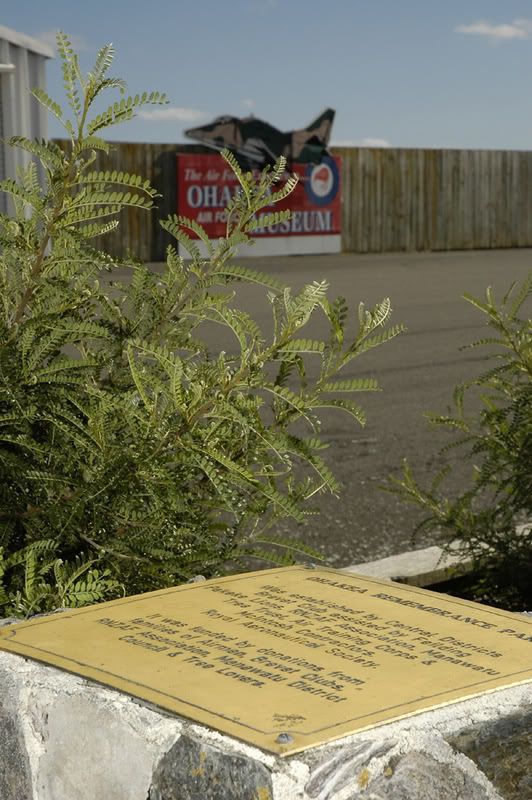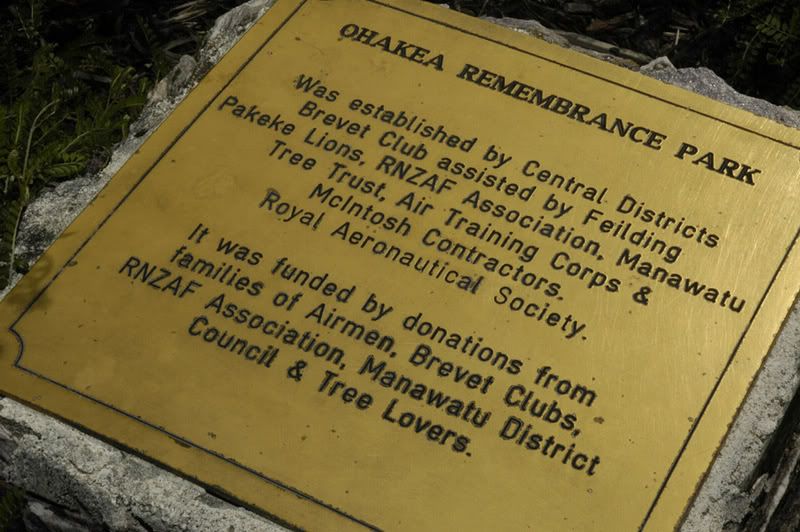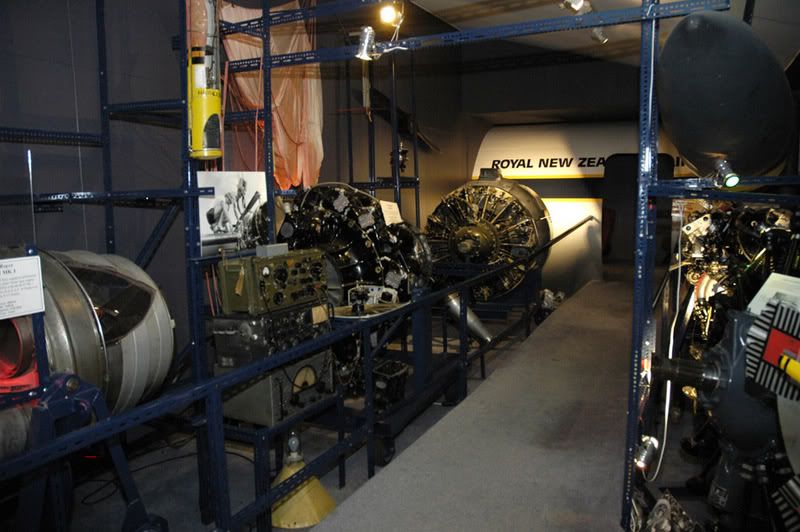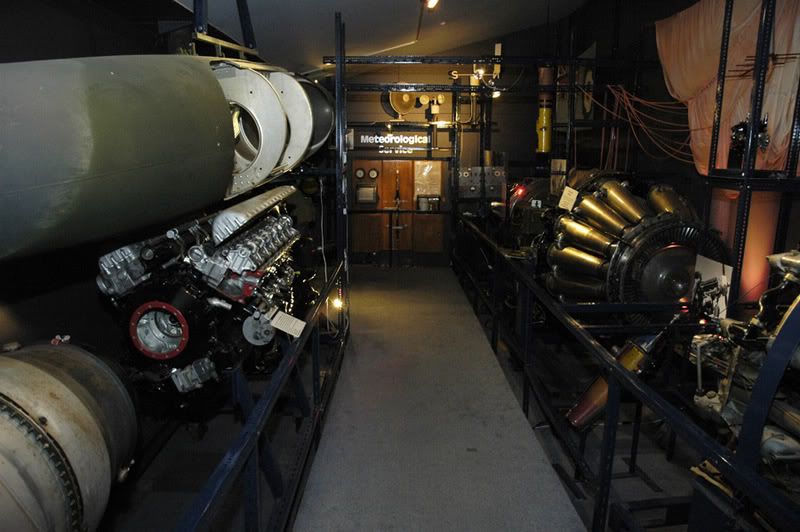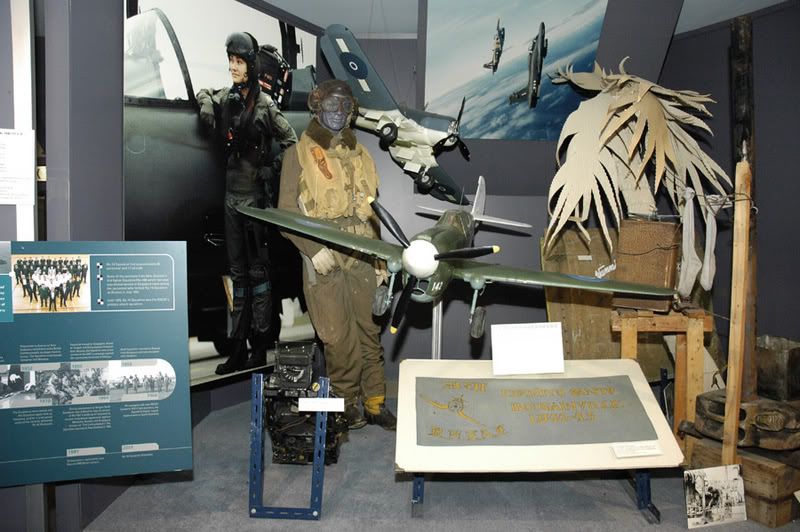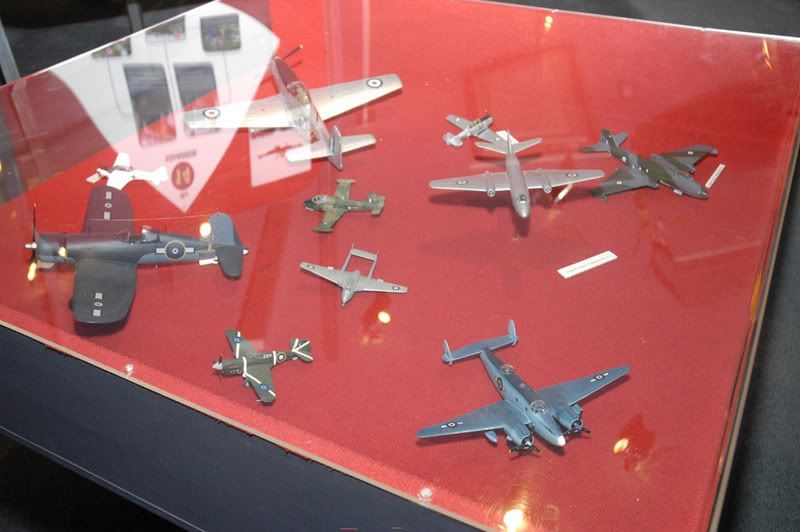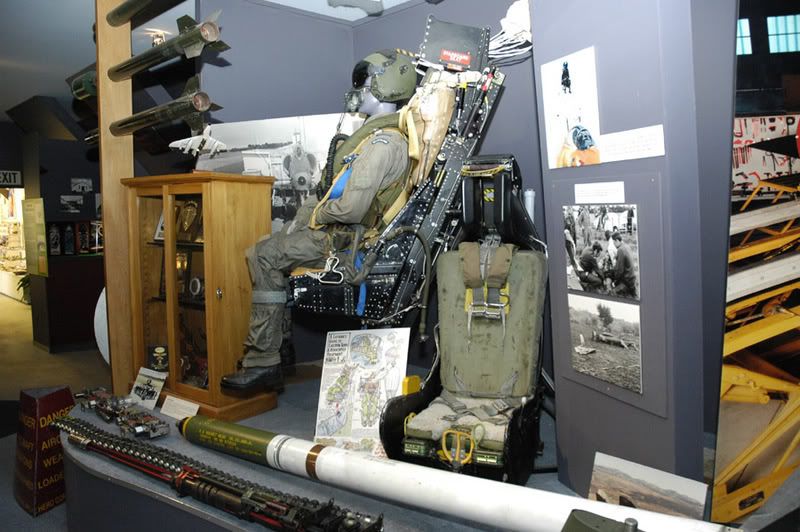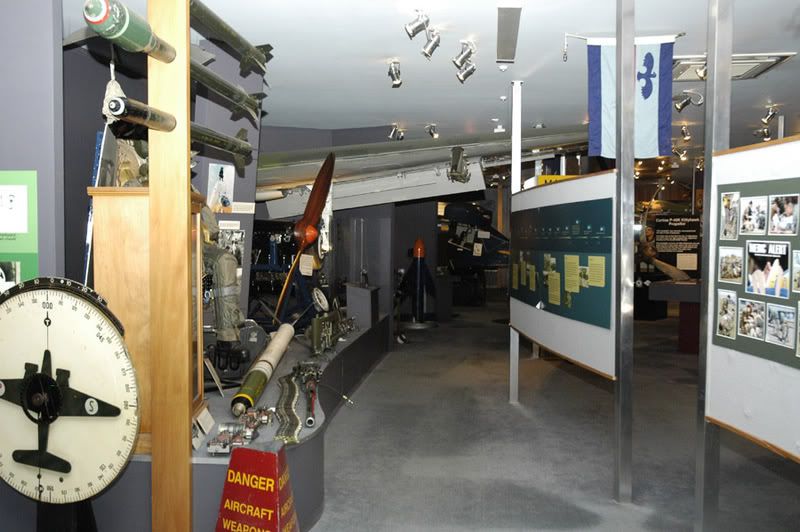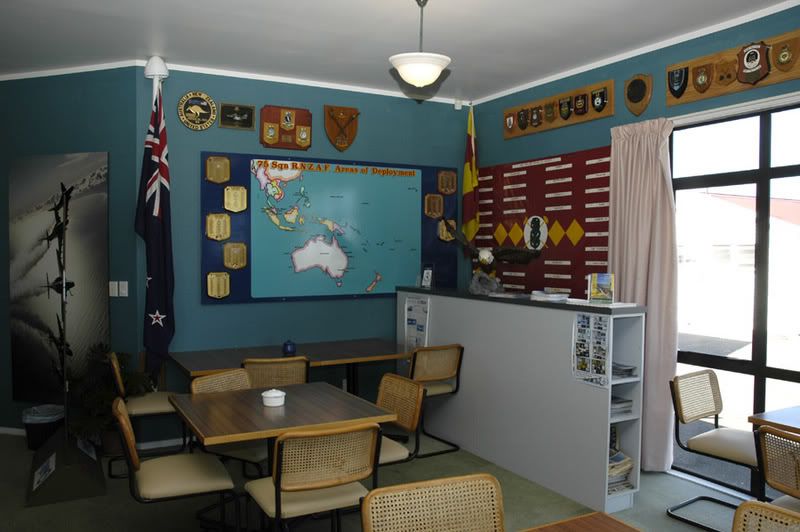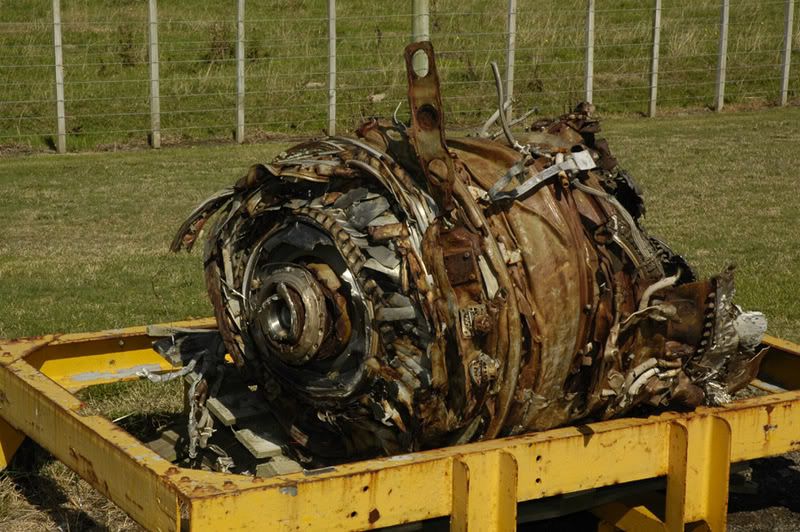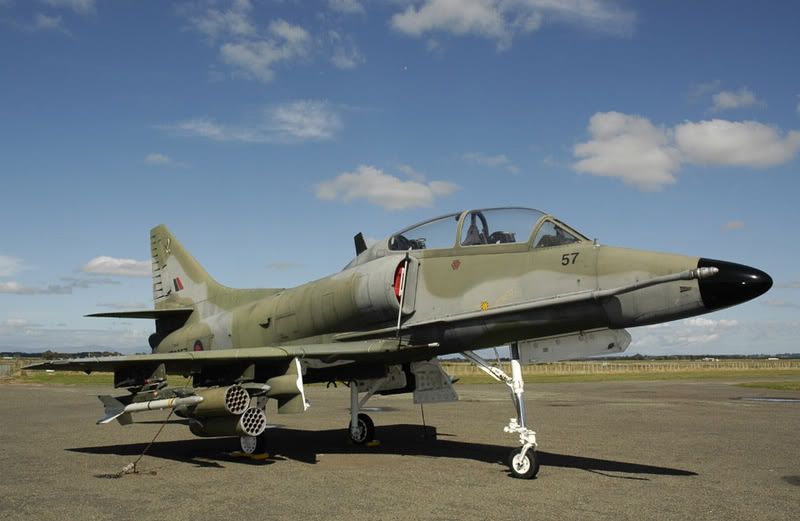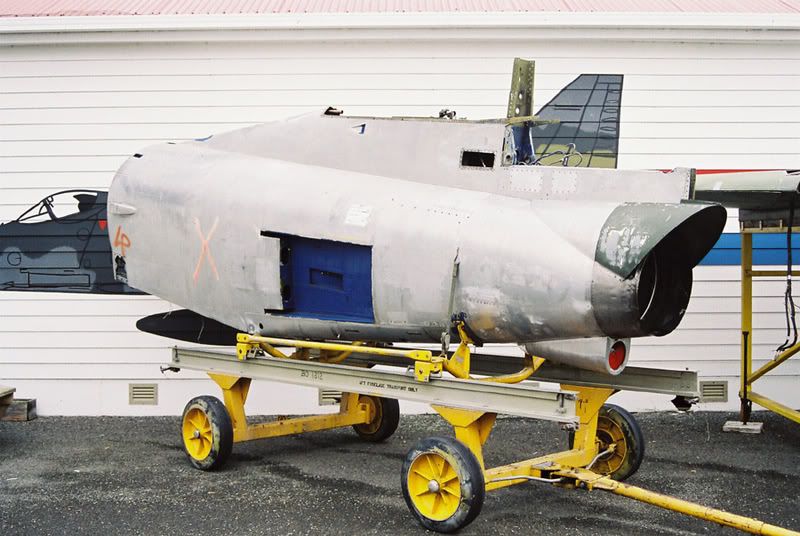




An Unofficial Guide To The
Royal New Zealand Air Force Museum
Ohakea Wing - A Tribute

This page is a tribute to the former museum that was situated at RNZAF Base Ohakea from 1976 till its closure on the 13th of May 2007.
The RNZAF Museum Ohakea Wing was first established as a small base museum in 1976 by an enthusiastic Warrant Officer who began collecting items of historical interest from around the base and storing them in part of an old H-Block (a type of barrack block). By 1977 the collection had outgrown its H-Block site and moved into the former No. 2 Mess Hall building which had been recently refurbished.
The collection continues to grow, and Mr Peter Strugnell was employed as the Director of the Ohakea base museum in 1978. Despite the museum being situated in the middle of the operational base, visitors got clearance to enter the base to visit it, and around 3000 people visited each year. It was also popular with RNZAF personnel living on or passing through the base.
When it was realised that such museums were becoming popular around New Zealand, the regional branch of the Friends of the RNZAF Museum group began a feasibility study in February 1991 to see if it was worth moving it to the more prominent and access able location. Air Staff and the RNZAF Museum Trust board approved the move in September 1991.
So, on the 23rd of September 1991, the building was cut into three parts and transported on big rig removal trucks to a piece of land outside the Ohakea main gate.
The weather and other problems held up progress in laying a road and car park for the building, and renovations and installation of the artifacts meant the museum remained closed for some time. However the challenges were overcome eventually and it was officially reopened on the new site in May 1993.
In the meantime the first aircraft exhibit had arrived, this being a Douglas C-47 Dakota that was loaned to the museum and moved there from Silverstream Aeronautical Society on the 18th of March 1992.
The setting up of the museum at the new site continued. All the labour for the move of the museum was donated free by local contractors and by the RNZAF. Peter Strugnell and the RNZAF Museum Trust Board had raised $340,000 by April 1992 in both cash and kind for the move and upgrade project. $90,000 of that had come directly from the Trust Board of the RNZAF Museum. A further $100,000 came from a New Zealand Lottery Grant.
Also the higher profile of the museum meant many people began to donate items and the collection grew and grew.
An aviation auction was held there on the 9th of May 1992 to raise funds, and this was so successful others were held and it was hoped to become a regular event, but it seems to have died out a long while ago.
April 1992's RNZAF News reports "Mr Strugnell is anxious to point out that the Ohakea museum is a branch of the RNZAF Museum and not in competition with it. "We want to create a display that will tell the history of Ohakea," he says. Anything not relevant will be sent down to the RNZAF Museum. "I want it to be known as the friendly museum."
In 1993 the museum was allocated BAC167 Strikemaster NZ6374, following its retirement from service at Ohakea.
Later they acquired a Harvard, a Vampire cockpit, and a Skyhawk simulator. A section of Lockheed Hudson fuselage was also put on display, and the last aircraft they added to their collection was a McDonnell Douglas TA-4K Skyhawk.
In March 2007 the announcement was made that the RNZAF Museum Trust Board was to reluctantly close the Ohakea Wing. Despite a public outpouring of sadness at the decision and pledges of support to try to keep it running, the museum closed its doors permanently on the 13th of May 2007.
__________________________________________________________________
The following collection of photographs were kindly supplied by Phil Garmonsway of Ohakea, and they were taken just a few weeks before the museum was permanently closed. They are the copyright of Phil Garmonsway ©2007. If all the photos do not load first time around, hit your refresh button.
The RNZAF Museum Ohakea Wing
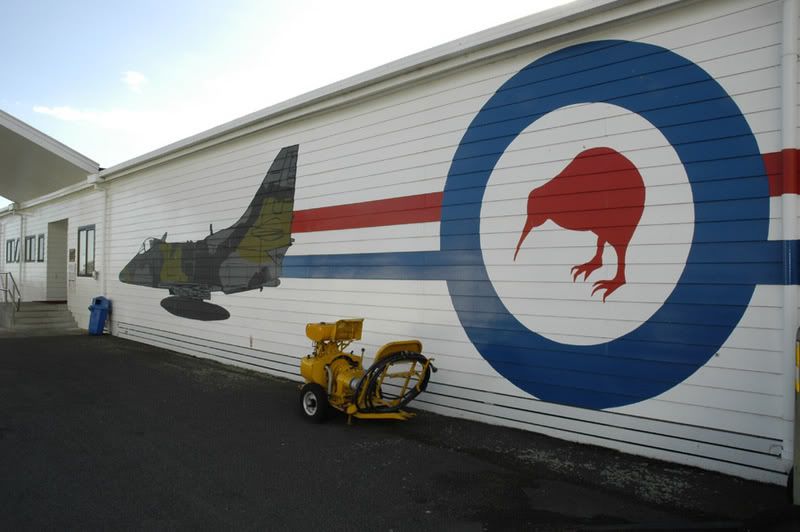
The RNZAF Museum Ohakea Wing Memorial Garden
The Memorial Garden at Ohakea is a sacred place to the RNZAF members, past and present, and is a place where people can go to remember the RNZAF's war dead, and those who've lost their lives in peacetime or passed away since their war service. The RNZAF have assured the public that this garden will not be disrupted as the base expands, and will remain open to the public to visit.

Below are some of the plaques in the Memorial Garden
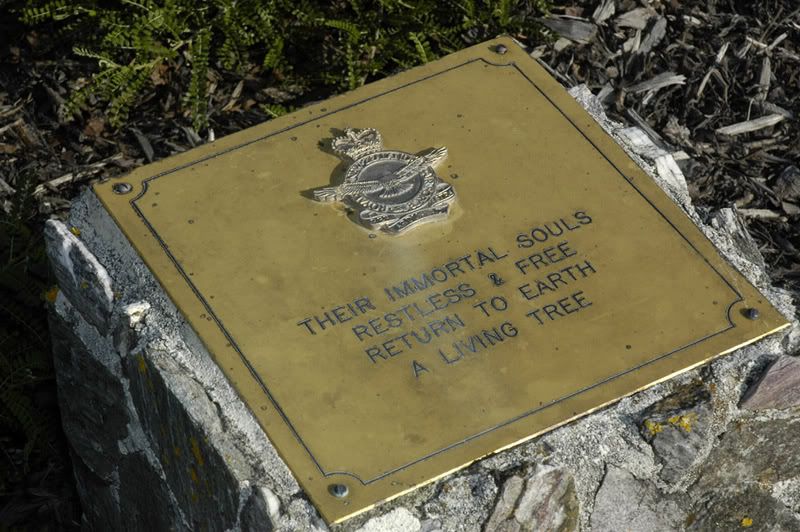
The RNZAF Museum Ohakea Wing Displays
Above: Engines on either side of the walkway, with a parachute displayed on the far wall. Also
seen is the theatre - mocked up as a C-47 fuselage - for showing videos or DVD's with actual
aircraft seats in it to sit on.
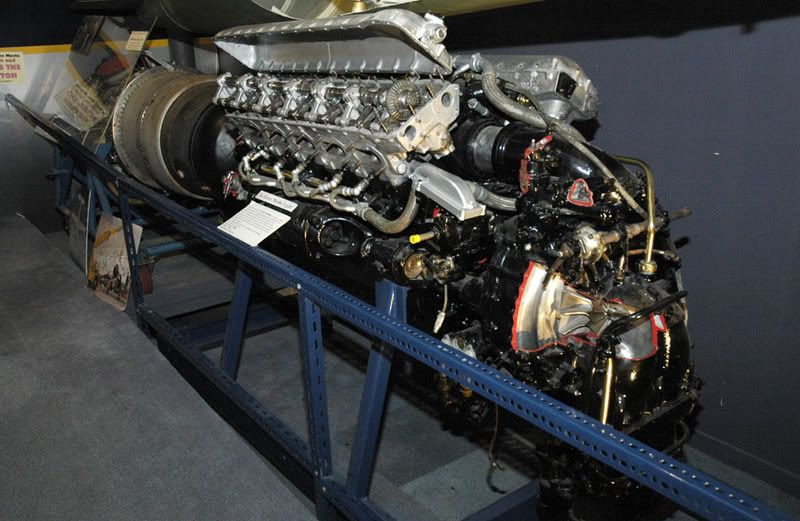
Above: A Rolls Royce Merlin engine
Above: A Merlin engine on the left below a Skyhawk fuel drop-tank. On the right is a Goblin jet engine from a de Havilland Vampire. There is also a sectioned and working (the blades turn by electric motor) Rolls Royce Avon and a Rolls Royce Viper from a Strikemaster in this area
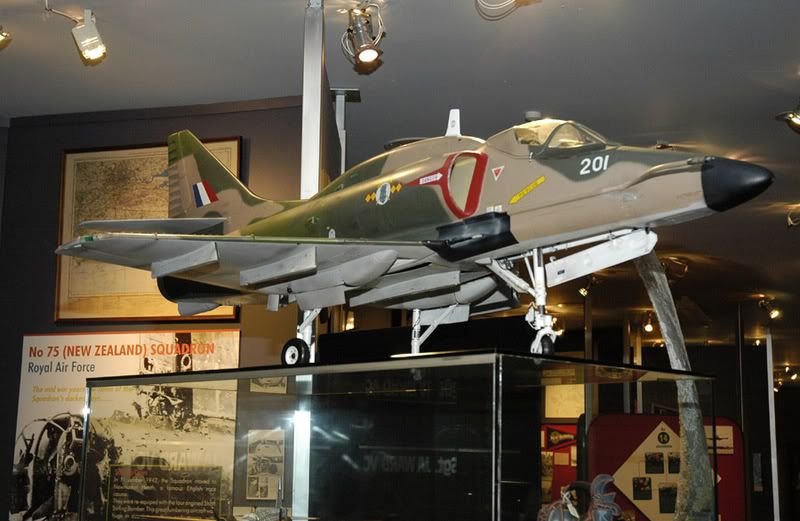
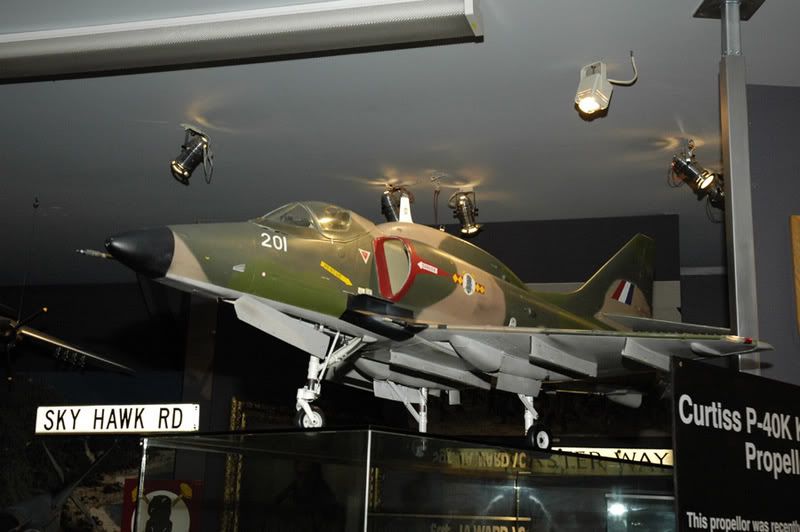
Above: A very nice large and detailed model of an RNZAF McDonnell Douglas A4-K Skyhawk in the colours they wore from 1970 till the mid-1980's. This model used to hang in the No. 75 Squadron Senior NCO's crew room. It had been donated to the squadron by the widow of it's builder
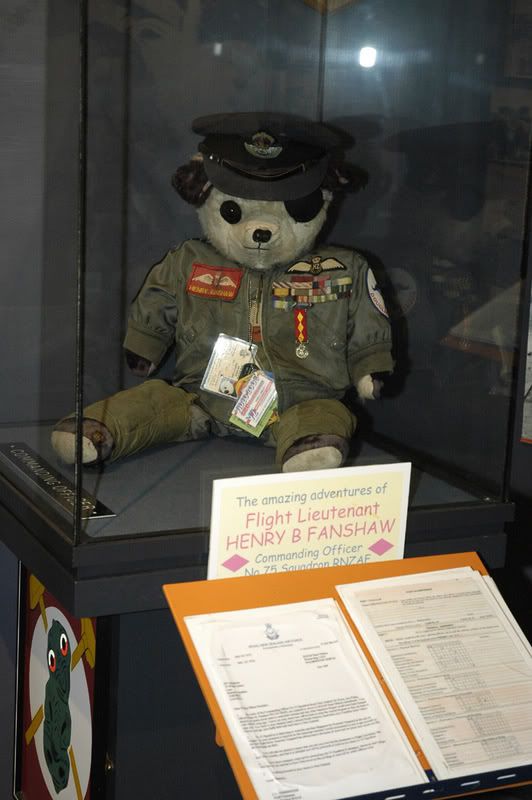
Above: Flight Lieutenant Henry B. Fanshawe, perhaps the RNZAF's most famous mascot. Over the years he has served with No's 2 Squadron, 3 Squadron, 14 Squadron, 75 Squadron and 40 Squadron as well as a few overseas exchanges when the RAAF 'borrowed' him. I believe he also did a tour of duty in
the first Gulf War.
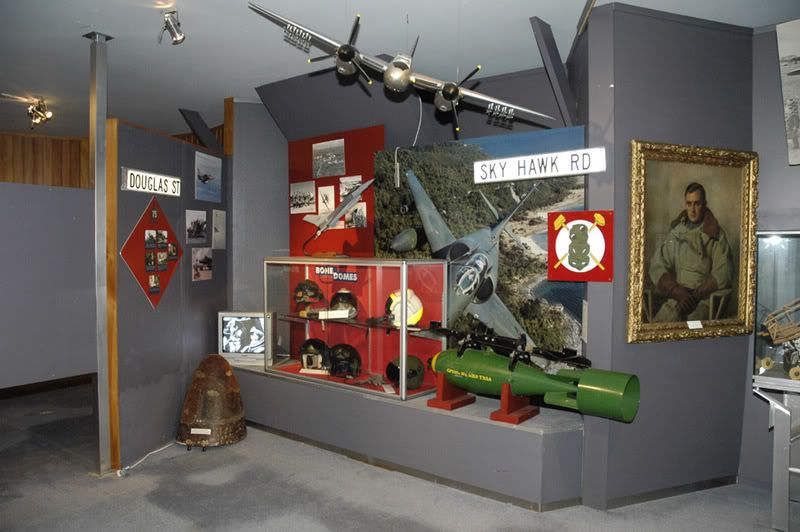
Above: The No. 75 Squadron display, which includes a model of a de Havilland Mosquito hanging from the ceiling, as operated by the squadron after the war. Also seen on the right of the photo is a portrait of Sgt James Ward, the RNZAF's first Victoria Cross winner. And of course the famous Skyhawks of 75 Squadron are seen in the photos.
Above: The Skyhawk cockpit. Former RNZAF Avionics Technician Don Simms says, "As it is today it is not a simulator – just a static display. I made it up in 2001/2002 to represent a Kahu era cockpit using scrapped and unserviceable items. However it is based on the repaired remains of the real NZ6207 cockpit (which crashed in 1974) and was originally used at No. 2 Squadron from 1985 as a procedure trainer (at that time it had a full pre-kahu cockpit fit out).
It was even wired up so the warning lights etc worked. When the Kahu project came along it was used as a cockpit mock up at No. 2 Squadron (with a wooden instrument panel). When 2 Squadron went to Nowra in 1991 it didn't go with them and ended up at GTW at Woodbourne where the Armourers used it for ejection seat practical exercises (in-situ seat servicing, removing the seat, etc).
While at GTW it attended Warbirds Over Wanaka in 2000 and Peter Calkin (from the Ohakea Museum ) saw it and expressed an interest in getting it for the museum. It arrived back at Ohakea in 2001 and I began building up the cockpit. Many people from the Avionics Maintenance Squadron (AVMS) contributed items for it (eg the HUD, Display Units, instruments, consoles, throttle quadrant). In 2002 (while I was working for Safe Air at Ohakea) it was finished to its current state and put on display in the entrance to the Museum, along with a complete pre-Kahu instrument panel (which I built up at the same time as the Kahu panel)."
Above: The No. 14 Squadron display, with models of the Curtiss P-40 Kittyhawk in the foreground and Chance Vought Corsair in the rear. The squadron's last aircraft type, the Aermacchi MB339CB, are depicted in photographs on the wall.
Above: Various models of aircraft that had served at RNZAF Ohakea. Starting at the top and moving clockwise, a North American P-51D Mustang from No. 2 (Wellington) Territorial Squadron, RNZAF in the 1950's; a North American Harvard trainer which served in several units at Ohakea during and after the war; A silver English Electric Canberra T.13 jet bomber-trainer, and an English Electric Canberra B.1.8 bomber in the camouflage; a Lockheed PV-1 Ventura which served at Ohakea with No. 2 (Bomber Reconnaissance) Squadron and with No. 1 (Bomber) Operational Training Unit); a Curtiss P-40N Kittyhawk - New Zealand's main fighter in 1941-44 and also operated at Ohakea with No's 2 and 4 OTU's; a de Havilland Vampire jet fighter of No. 75 Squadron in the 1950's and 60's; a Chance Vought F-4U1D Corsair, the RNZAF's main fighter 1944-45; and a BAC167 Strikemaster, the main jet trainer of the RNZAF from 1974-1991
Above: Seen here are two ejection seats, the unoccupied one being an ESCAPAC IG3 seat from the A-4K Skyhawk, and the seat with the pilot in it is a Martin Baker PB4 from the Strikemaster. In front of these are a 5 inch Zuni rocket, fired from a four shot pod carried by the A-4K in it's earlier years. And there's also a sectioned Colt 20mm Mk12 Mod 4 cannon from the Skyhawk
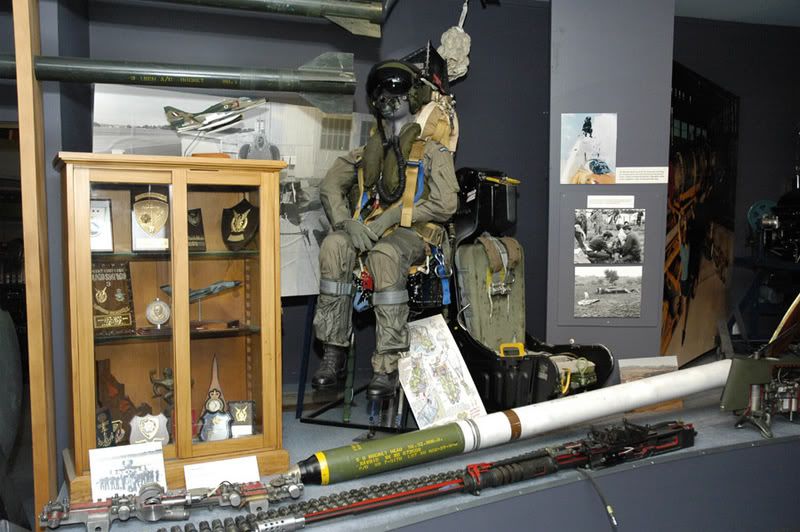
Above: On the right of this photo you can see the nose of the sectioned Aero 20 B rack, as fitted to
stations 1 and 5 of the A-4K, the same rack was also fitted to stations 2 and 4, but in a different fairing.
In front of the nose of the zuni can be seen lying down the sectioned Aero 7 rack that was the center line (station 3) on the A-4K. I am unsure of the designation of the three smaller rockets. The 11 x1 4 black and white photos on the wall are of Fred Kinvig and NZ6207, after he ejected over Bulls.

Above: At the right of this photo is a Seacat missile used by the Royal New Zealand Navy. On the left is a Canberra seat. Behind the Seacat in the glass case can be seen the CFG Constant Frequency Generator (or better known to the maintenance crew as the 'constantly failing generator') from the A-4K.
Above: A general view of one of the museum's areas
Above: The café at the Ohakea Museum . Don Simms adds, "All the memorabilia, maps etc. that you can see in Phil's photo came from the No. 75 Squadron SNCO's crew room. The map shows all the places the Skyhawk deployed to with No. 75 Squadron in its 31 years service. The “Battle Honours” flag on the other wall also lists all the places No. 75 Squadron went to with the A-4.
Above: This severely compressed jet engine sitting outside on the yellow trolley is a Pratt & Whitney J-52 P-8B from Skyhawk NZ6203 which crashed near Marton in 1996, after the engine failed due to a broken oil line (the pilot, Flt Lt Antony Frazer, ejected safely). The engine was the largest recognisable piece of the aircraft left. A number of smaller bits of aluminium wreckage from the aircraft were subsequently sold for $2 each as a fund raiser by the Ohakea Museum. A sign on the outside of the box stated "genuine Skyhawk parts"!
The RNZAF Museum Ohakea Wing Aircraft Displays
Douglas C-47 Dakota
This aircraft was formerly ZK-BYF. It had served in WWII with the US forces, and then went to Trans Pacific Airlines in 1953. It was sold onto Aloha Airlines in November 1958, and two years later it arrived in New Zealand on the 4th of December 1960.
Registered to Rural Aviation in NZ as ZK-BYF on the 23rd of February 1961, the Dakota was converted for agricultural topdressing work in Hong Kong (to James Aviation specifications) and returned to New Zealand on the 4th of March 1961.
The aircraft went to Airland on the 25th of August 1966 and continued topdressing, and it later passed to Fieldair at Palmerston North on the 20th of February 1978. Fieldair dubbed the aircraft 'Kotuku', and it continued work as a topdresser until it was withdrawn from use on the 20th of January 1981. On retirement it had a total of 34,891 hours on the clock.
The Dakota was purchased in 1982 by collector John Regan, and transported by road to Lower Hutt where work began to restore it back to wartime configuration was started by the Silverstream Aeronautical Society.
On the 18th of 1992 the aircraft was transported again by road to Ohakea where further restoration work was completed. It arrived in poor quality Olive Drab paint with no markings. The RNZAF set about tidying it up and they repainted it into RNZAF Pacific colours, with Olive Drab scheme and RNZAF Pacific roundels with bars. It was officially given the number NZ6289. The prefix NZ62 was that allocated to the A4 at the time, so obviously some Skyhawk fans had a hand in the painting of it.
Not too long afterwards the Dakota was completely stripped and repainted, this time into the higher visibility postwar VIP scheme of No. 42 Squadron (as now seen on the Warbirds Dakota), and it was renumbered NZ3547. This meant it was more easily seen from the main road, State Highway One, and helped to draw passer-bys to the museum.
In 1998 this aircraft was removed from display by its owner John Regan, who had been put up for sale. It was purchased by the Gisborne Aviation Preservation Society (GAPS), it was moved by road to its new home at Darton Field, Gisborne, during the 20th till the 22nd of May 2000. The aircraft is currently on display at Gisborne airfield at the GAPS facility.
BAC167 Strikemaster
NZ6374 has been with the Ohakea Museum since it retired from RNZAF service in 1992. It is completely original as it was in service, and was repainted by the RNZAF prior to going on display outside the museum, but like the Skyhawk, its paintwork has faded quite badly being outdoors for so many years.
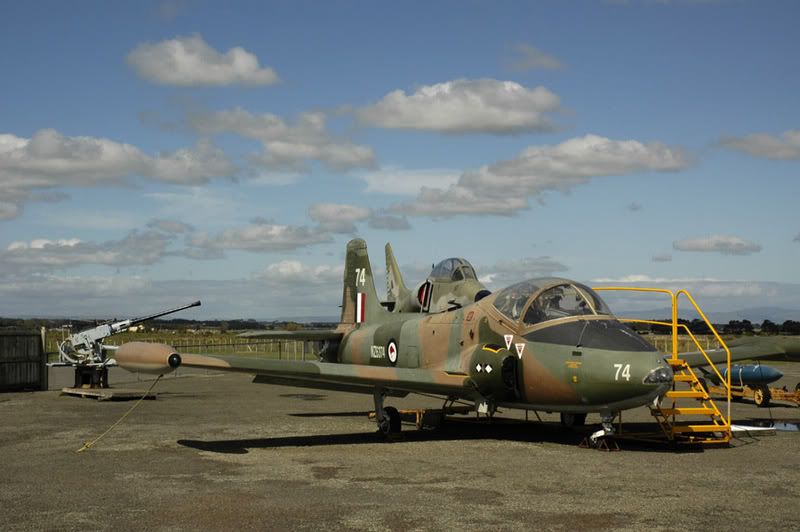
Strikemaster NZ6374 sits outside the museum in front of the Skyhawk and the anti-aircraft gun.
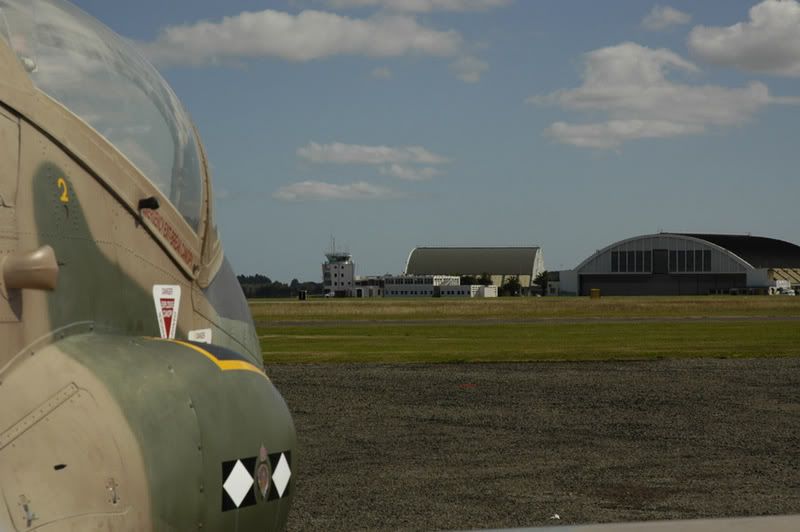
The Strikemaster looks towards its old home, RNZAF Base Ohakea
de Havilland Vampire FB5 Cockpit
NZ57??
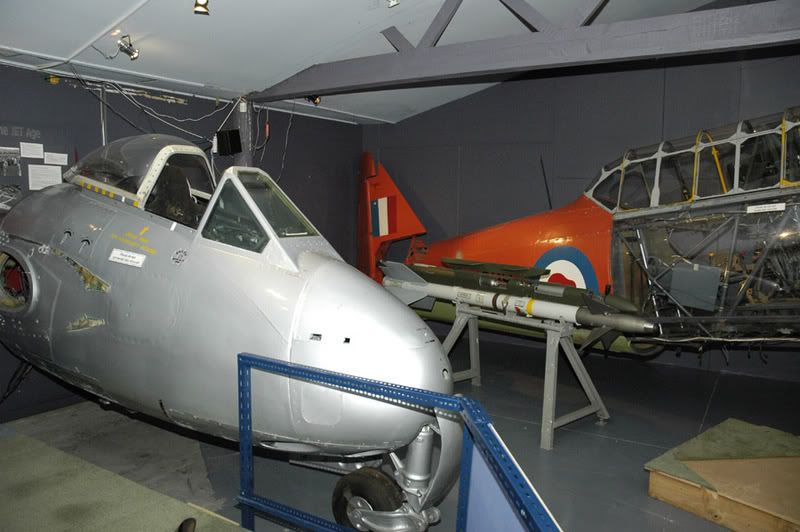
North American Harvard
This is the fuselage of an RNZAF Harvard which is now held as an attrition airframe with the RNZAF Historic Flight at Ohakea. There was only enough room in the museum for the fuselage so the wings are stored elsewhere by the CFS Historic Flight. It was displayed without panels so the public could view inside it
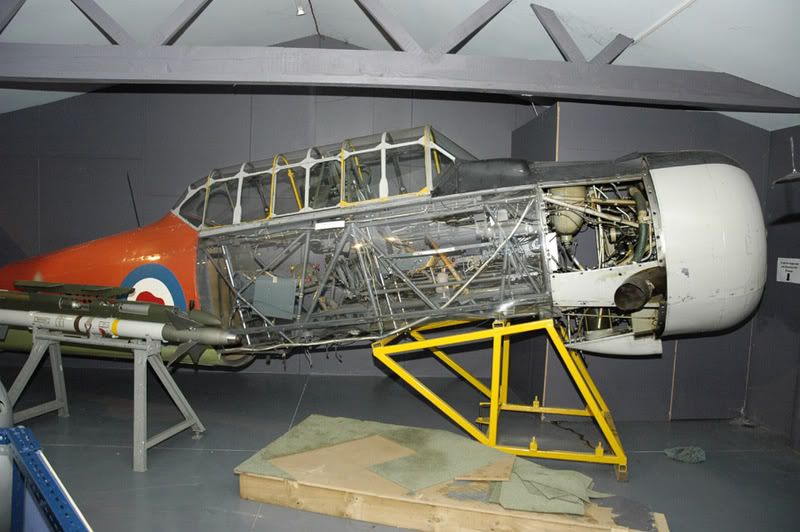
Lockheed Hudson
This fuselage section was formerly used as a farm shed before its arrival at the RNZAF Museum Ohakea Wing. I believe that the identity of the aircraft it came from is unknown

McDonnell Douglas TA-4K Skyhawk
Don Simms tells the story of the construction of this Skyhawk “NZ6257”:
"The original idea to build this aircraft came from Bill Taylor in 1998/99 when we were getting the F-16's and all the A-4's looked like they were going to be sold to The Philippines. Bill was ex F/Sgt aircraft trade and worked as a civilian at Ohakea. He started collecting smaller scrapped and unserviceable Skyhawk airframe components (like the undercarriage, flight controls etc.) and identified where other larger items were that would be needed to build a complete aircraft (like the wing and fuselage halves).
It was decided to build and paint it as a pre-Kahu, late 1980's era aircraft. Both No. 2 Squadron and No. 75 Squadron markings were applied to the aircraft as a tribute to all who served on them over the Skyhawk years.
A range of external weapons and stores were collected to display on and around the aircraft, including an AIM-9G Sidewinder and LAU-7 launcher, 500lb high and low drag bombs, 6 and 19 shot rocket pods, MER's/TER's, drop tanks and a buddy store. There was also a concrete filled 2000lb bomb on a trolley which was one of 2 purchased with the Skyhawks in 1970 (we never actually used 2000lb bombs in service though).
The completed Skyhawk was officially handed over to the Ohakea Museum at a small ceremony in Dec 2002 (but on the condition that it always stayed at Ohakea). Since then it has been on display outside the museum and its paintwork has faded quite badly. It will need a full repaint to bring it back up to display standards."
The following photos and captions were contributed by former RNZAF Avionics Technician Don Simms and demonstrate the process of how this magnificent display was pieced together
"Forward Fuselage – ex crashed USN TA-4J (had been recovered from the sea so was quite badly corroded in places). Arrived at Woodbourne in 1984. There was nothing forward of the cockpit pressure bulkhead, no canopy, seats, avionics, etc – just a bare shell (see photo). It was used as a cockpit mock up for project Kahu, then for battle damage repair training (students shot holes in it and then had to repair them!). Declared surplus to requirements at WB in the mid 90's and sent to Ohakea where it was extensively repaired and fitted out with a pre-Kahu cockpit, brand new nose section (from the ex RAN spares), genuine pre Kahu radome, RH intake (the original had been removed and fitted to one of our flying Skyhawks!), canopy etc. Once repainted it was taken over to the Ohakea Museum and put on display inside the museum. A computer based flight simulator was then fitted to the rear seat. While in this configuration it was loaned to Te Papa and put on display in Wellington for a period."
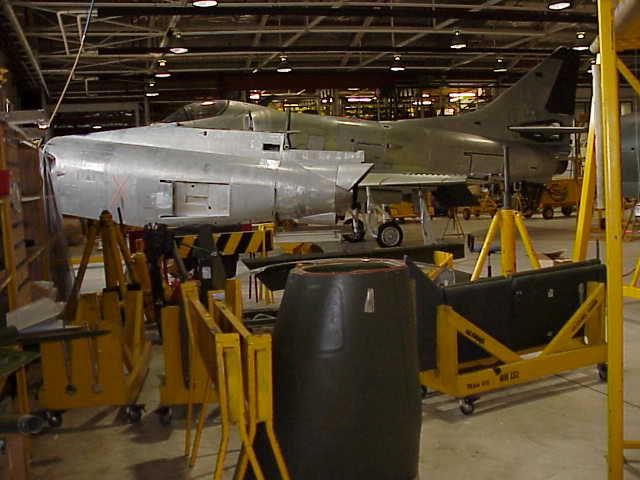
"Aft Fuselage - ex USN A-4F Blue Angels. Purchased by the RNZAF in 1986 to repair NZ6218 (rolled over at Townsville in 1985). Was still in its Blue Angels colours when it arrived at WB. The complete fin was removed for the repair of '18. In 1999 the stripped out fuselage was sent to AMS Ohakea to be used on Bill Taylor's Skyhawk project. In 2001 a fibreglass mould was taken from the fin of one of the real Skyhawks and an aluminum frame constructed to attach the new fibreglass fin to the fuselage."

"Wing – one of the spare unserviceable Skyhawk wings from Woodbourne. Was sent up to Ohakea in 1999 for Bill Taylor's project – not sure which aircraft it came from but it may have been NZ6254 (it required a new wing after its heavy landing at Ohakea in 1994)."

Construction 2001-2003 – Bill Taylor had left Ohakea by 2001 so the project was taken over by a core group of people who wanted to see it completed before the real Skyhawks were sold (ha ha!). These included myself, Robbo Robinson, Andy Torr, Baz Bennett, Age Duncan, Grant Morrow, amongst many others (but these were the key players). We received huge support from all over base (and the RNZAF in general) and it was never a problem to get anything done or find those final hard to get items to complete the project. The Suppliers were also extremely helpful in arranging the timely processing of paperwork to get unserviceable but repairable RNZAF inventory items scrapped so they could be used on the project (one of our directives from senior management was that we were only to use scrapped and unserviceable parts!). Because the completed aircraft was just going to be an empty shell (no engine fitted) a large plastic water tank was fitted where the engine would normally go to provide ballast to stop the aircraft from blowing over in Ohakea's notorious wind.



In the Paintshop
Below - the completed aircraft.
A huge thanks to Phil Garmonsway and Don Simms for their assistance in compiling this tribute to the
RNZAF Museum Ohakea Wing

